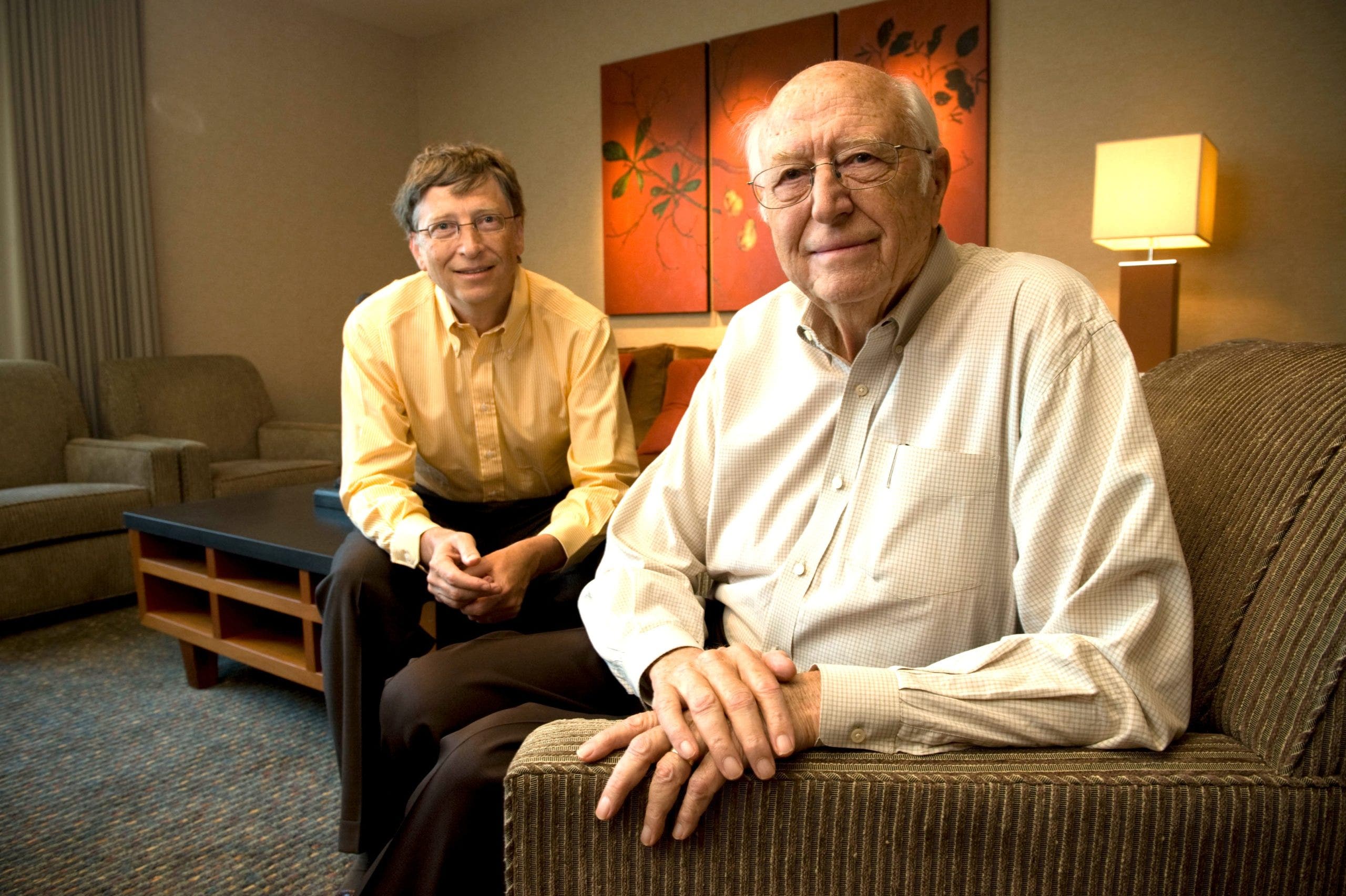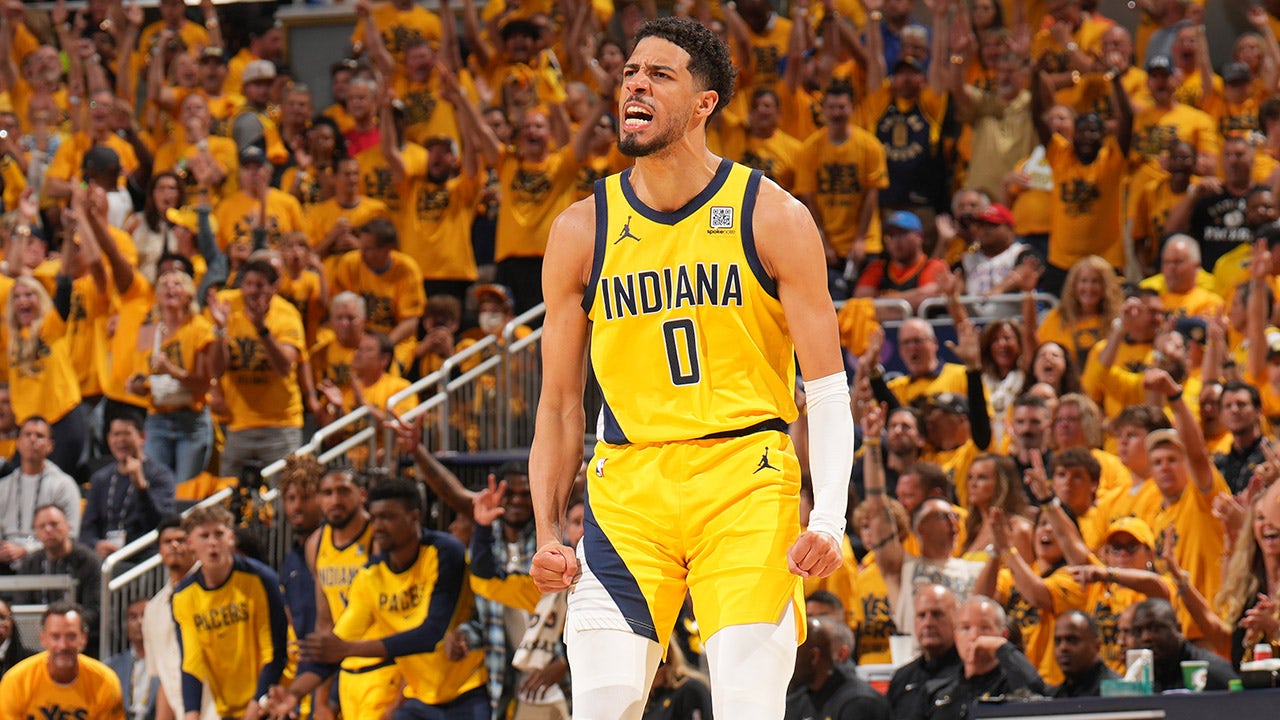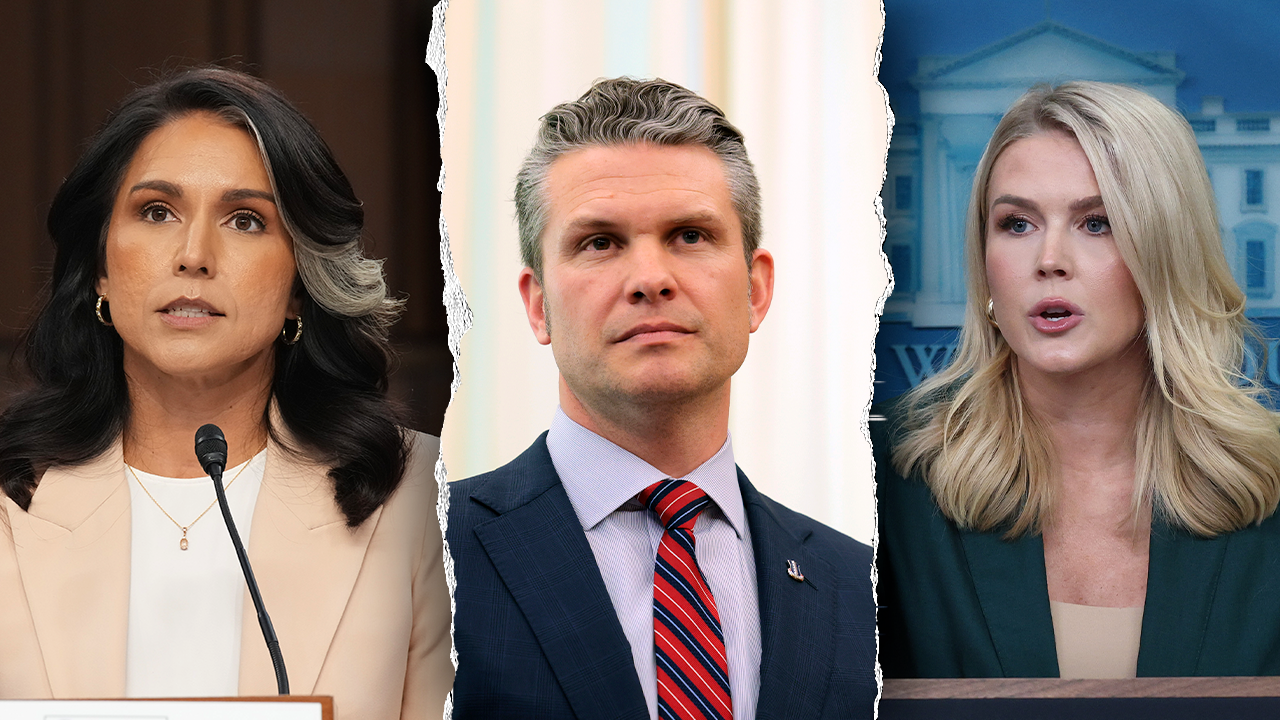Business
The Latest Trend on Yachts? Submersibles.

Charles Kohnen, co-founder of the submersible manufacturer SEAmagine Hydrospace, estimates that there are 200 manned vessels worldwide. Some are used by scientific institutions, others for tourism. But a growing number belong to a select group of yacht owners.
While a ticket aboard a submersible tour, like the one that ended in tragedy this year en route to the Titanic shipwreck, is too pricey for most people, owning a submersible requires another level of wealth and boating infrastructure.
Only sufficiently large yachts — at least 120 feet — can hold a sub, which typically costs between $2 million to $7 million (not including the cost of a crane to lower the sub, the speedboat needed to board, and services like mapmaking and guides that can run about $15,000 per day).
“It’s not like a fancy car,” Kohnen said. “It’s more like a $5 million spacecraft.”
Just as having a helicopter and launchpad on a yacht was hot in the 1980s, Kohnen said, getting a personable submersible is increasingly a thing for the wealthy.
Ofer Ketter, whose company, SubMerge, caters to personal sub owners, sees a similar trend. “You have a mega-yacht, a super yacht — a submersible has become the next thing to have,” he said.
Deep-sea explorations have a growing fan base among the elite. The filmmaker James Cameron and the billionaire investor Ray Dalio have both donated vessels to the Woods Hole Oceanographic Institution and invested in the submersible manufacturer Triton Submarines. Dalio said it was about discovery. “The ocean is the greatest resource we have,” he said. “It’s twice the size of all continents combined — and underexplored.”
Some submersible owners lend out their vessels for documentaries and scientific research, while others are in search of never-before-seen species or want to explore shipwrecks. And there is a kind of mixed-use model that is versatile for everything from an underwater wedding to cocktails on the reef, dinner or a poker game, said Craig Barnett, Triton’s director of sales and marketing.
The personal submersibles industry has grown with the size of yachts. When SEAmagine started in 1995, mostly robots were used for deep-sea scientific work because lowering submersibles into the ocean with people inside was unwieldy, Kohnen said. The company built a model that could be boarded from the water, and this relaunched an era of manned submersibles for science and tourism. Around 2005, SEAmagine got its first yacht commission — and competition. Another submersible manufacturer, U-Boat Worx, started operations in the Netherlands, and Triton soon followed. Yachts were becoming bigger, but, Kohnen said, people were also starting to value experience-seeking over luxury.
Making “the moment.” Where to dive and how long an expedition lasts depends, but an adventure can take months of planning to scout, map and set up. SubMerge has coordinated five expeditions with three different private clients this year, Ketter said, and the company works with about six luxury travel firms, including submersible manufacturers.
A typical day “in a good spot” usually involves a few dives that last about an hour or two, with breaks for meals, Kohnen said. “Even after a thousand dives, it never stops being exciting.”
What about the implosion of the Titan? The fatal OceanGate tour shined a harsh spotlight on deep-sea adventure. But Kohnen said the craft involved was an “outlier” that was not built to specifications and had been a cause of concern in the submersible community for years.
Ketter said that his company had not had any cancellations since the accident. Triton likewise said that it had no cancellations, that it was building five submersibles and experiencing “remarkable demand” from private owners and tourism companies.
Although private submersibles are gaining momentum, Barnett said, the number of scientific institutions using them was “regrettably low.” Dalio said he thought filming the ocean from private craft would spur more investment and exploration. “It’s very underfunded, but it’s picking up,” he said. — Ephrat Livni
IN CASE YOU MISSED IT
The Fed could pause interest-rate rises next month as inflation cools. Consumer prices rose moderately in July, according to Consumer Price Index data released this week, and consumers expect inflation to slow over the next year, a closely watched University of Michigan survey showed. The wild card is volatile food and fuel prices, which could add to inflationary pressures.
Goldman Sachs’s longtime chief of staff steps aside. DealBook reported that John Rogers, the bank’s longtime chief of staff, would start handing over some of his responsibilities to Russell Horwitz, a former deputy. The shake-up occurs as Goldman’s C.E.O., David Solomon, conducts an overhaul of the bank, which has seen prominent executives leave.
Disney vows to stem streaming losses and doesn’t rule out selling its TV businesses. The entertainment giant’s C.E.O., Bob Iger, said subscription-price increases for Disney+ and Hulu would go into effect in the fall. And, like Netflix, it will crack down on password sharing. Wall Street is getting impatient as Disney’s streaming losses have ballooned to more than $11 billion since 2019.
Zoom’s A.I. data policy sets off a backlash. The popular videoconferencing platform issued a clarification this week that it would seek customers’ consent before using their audio, video or chat data to train artificial intelligence models. Digital rights’ advocates, however, worry that may not be enough to protect unsuspecting Zoom users as privacy concerns multiply alongside the explosion in popularity of A.I. tools like the ChatGPT and Bard chatbots.
A Kennedy bets on start-ups that serve the disabled
The Kennedy family has for decades made advocacy for the disabled one of its signature causes, from Senator Ted Kennedy sponsoring the Americans With Disabilities Act to Eunice Kennedy Shriver founding the Special Olympics.
Now, a scion of the political dynasty, Christopher McKelvy, has teamed up with Judd Olanoff, a former JPMorgan Chase banker, to approach disabilities in a new way: by starting a venture capital firm focused on the community.
Meet K. Ventures. McKelvy — a grandson of Patricia Kennedy Lawford and a former tech executive — and Olanoff initially worked together on public policy advocacy for people with disabilities and their families at the Joseph P. Kennedy Jr. Foundation. (McKelvy is a trustee at the foundation.)
They realized that the start-up sector offered both new services for the disabled and viable business models that could scale because of developments like Medicaid reimbursements. McKelvy and Olanoff left the foundation last year to start their firm. Its backers include Brian Jacobs, a longtime investor who runs Moai Capital, who told DealBook that the founders’ connections “are definitely unique and valuable.”
“My family’s hope,” McKelvy told DealBook, “is that K Ventures will be the next chapter” of our work on behalf of the disabled.
The firm is a bet on the growing market for disability services. The Centers for Disease Control and Prevention estimates that up to 27 percent of the country’s population has some kind of disability. The agency also found in 2020 that one in 36 children has been diagnosed with autism, up from one in 44 in 2018, thanks to better recognition of symptoms.
Olanoff said big companies were also starting to invest in providing disability services and benefits, presenting an opportunity for start-ups.
K. Ventures has made three investments, including Juno, which provides cash benefits to parents if their children become severely injured or disabled; Juniper, which automates billing for behavioral health services providers; and NeuroNav, which helps adults with developmental disabilities in California devise their own customized help services.
Major investment firms have also started to take notice of the opportunity: Andreessen Horowitz and Y Combinator have backed Juniper, while Pear VC has invested in NeuroNav.
McKelvy and Olanoff are using the Kennedy name and resources, including by bringing in advice and networking opportunities from relatives like Tim Shriver, the chairman of the Special Olympics, and Patrick Kennedy, the former congressman. For the past two years, it has also hosted a forum for disability start-ups at the Kennedy compound in Massachusetts.
Shriver believes disability advocacy needs philanthropy, but also businesses with sustainable and profitable operating models. When his team heard about K Ventures, he said, “we thought, bingo, that’s the missing piece.”
The reporting behind Netflix’s ‘Painkiller’
The Supreme Court temporarily blocked a bankruptcy deal for the Sackler family’s Purdue Pharma, the maker of OxyContin, on Thursday. The agreement would have capped the liability of the Sacklers at $6 billion and protected the family from any more civil lawsuits connected to the opioid epidemic. But the ruling will likely delay payments to the thousands of people who sued the Sacklers and Purdue.
In 2003, Barry Meier published “Pain Killer,” a book about the illegal methods and distorted science that Purdue had used to promote OxyContin. This week, Netflix released a fictionalized series based on the book starring Matthew Broderick as Richard Sackler, the former president of the company, who led the push to develop the drug and make it a routine treatment for pain.
DealBook spoke with Meier, a former reporter at The New York Times, about what had changed — and had not — since he first began investigating the role companies played in the crisis. This interview has been edited and condensed for clarity.
Why does the story remain so relevant two decades after the book was published?
It’s remarkable, and sad that it took as long as it did for the book to reach this big audience. But there’s hardly a person in this country who hasn’t been affected in some way. It’s 20 years from when it was published, and during that time more than a quarter of a million people died of overdoses from prescription opioids like OxyContin.
You said the book was a “total flop” when it was published. Was there an inflection point when people started paying more attention to the story of Purdue Pharma?
It started about 2017, 2018, when there was this new wave of lawsuits brought against not only Purdue, but individually against members of the Sackler family. That was a real turning point, because we began to see internal documents that were written by Richard Sackler. And, subsequent to that, the photographer Nan Goldin began her campaign for museums to take the Sackler name down from their walls, which turned out to be a remarkably successful political and cultural campaign.
Has anything changed in the relationship between the pharmaceutical industry and Washington?
I would hope that the Food and Drug Administration will never again make a decision as catastrophic as it did when it allowed Purdue to claim that this incredibly powerful and potentially addictive drug might be safer than competing drugs without even a shred of evidence.
But you can never be sure. I have seen numerous instances where a medical product that was valuable for a limited pool of patients has run amok because its manufacturer decided that in order to make billions of dollars, it was going to have to promote it to as many patients as possible — patients for whom the benefits of the drug began to be outweighed by its substantial risks. This is not a pattern that’s unique to OxyContin.
Could that pattern be shut down?
Until we start seeing corporate executives marched off to prison for violating the trust that doctors and patients have put into them, nothing is going to change.
We’d like your feedback. Please email thoughts and suggestions to dealbook@nytimes.com.

Business
Driverless disruption: Tech titans gird for robotaxi wars with new factory and territories

As three key players vie for dominance, the race to put driverless taxis on roads across the country is heating up.
Waymo, owned by Google’s parent company Alphabet, already offers paid autonomous rides in a handful of cities, including San Francisco and Los Angeles. Amazon’s robotaxi effort, known as Zoox, opened a new production facility in the Bay Area this week. The company has been testing its unique pill-shaped vehicles in California and Nevada since 2023.
Meanwhile, in Austin, Texas, Elon Musk just started testing driverless Teslas with the hopes of launching a commercial service soon. Musk unveiled a prototype for Tesla’s Cybercab late last year, touting his vision for an autonomous future and “an age of abundance.”
The arrival of self-driving tech could eventually affect society as much as the internet and smartphones did years ago, some experts predict. With Waymo leading the way and Tesla and Zoox trying to catch up quickly, a new status quo could be on the horizon, said Karl Brauer, an analyst with iSeeCars.com.
“Tesla has tried to catch up, and Zoox is a more recent competitor that’s hoping to be a serious player,” he said. “Waymo has been slow and steady and, as a result, is winning the race.”
According to some industry insiders, the U.S. is about 15 years from seeing widespread use of robotaxis, Brauer said. While Waymo taxis have become a common sight in the cities where they operate, weather conditions and charging infrastructure still limit their expansion.
On Wednesday, Waymo expanded its service area in Los Angeles County, where its vehicles now roam an area of more than 120 square miles. The company also increased its service area in San Francisco, expanding access to suburbs and Silicon Valley.
Days after Waymo’s announcement, Zoox opened a 220,000-square-foot facility in Hayward, Calif., that the company says will be able to produce 10,000 robotaxis per year. Zoox is preparing to launch its public ride-hailing service in Las Vegas and San Francisco this year.
Unlike Waymo vehicles, which are retrofitted Jaguars, Zoox is developing a purpose-built taxi with no steering wheel or gas pedals.
Zoox also has a manufacturing plant in Fremont, Calif., where the company develops its test fleets of retrofitted Toyota Highlanders. Tesla has a manufacturing facility in Fremont as well.
Musk has promised for years to deliver autonomous vehicles and a robust ride-hailing service. Lawmakers in Austin requested this week that he delay the rollout of his service in the city.
Tesla, Zoox and Waymo are the three remaining major U.S. companies in what was once a more crowded field, Brauer said. General Motors’ autonomous taxi company Cruise suspended operations in 2023 after one of its vehicles struck and dragged a pedestrian in San Francisco. Last year, Uber and Cruise announced a partnership that could put Cruise vehicles back on the road.
A company called Argo AI, backed by Ford and Volkswagen, was also developing driverless technology until it shut down in 2022.
The continued expansion of robotaxis depends on safe and successful testing, Brauer said. There have been several incidents related to Tesla’s Full Self-Drive mode, a technology currently available but still in development. Waymo has issued recalls of some of its vehicles on multiple occasions.
“If there’s a tragic result for any of these three companies during the testing and development process, it would likely slow down the entire industry,” Brauer said.
Business
Protesters are chasing federal agents out of L.A. County hotels: ‘A small victory’

At Pasadena’s AC Hotel earlier this month, dozens of protesters gathered in an effort to confront federal agents who had arrived in town amid demonstrations against the Trump administration’s mass deportation effort.
Pasadena Mayor Victor Gordo was among those present on June 7 as demonstrators holding signs with “ICE out of Pasadena” and other messages chased federal vehicles out of the luxury hotel’s parking garage, cheering and recording it all on their cellphones.
The mayor said the protest forced the agents to leave the place they were using for local accommodations during their L.A. operations, which involved protecting federal buildings downtown.
“Word got out that there were Homeland Security vehicles parked at the hotel,” Gordo told The Times. “People wanted to express their 1st Amendment rights and they did so in a lawful, nonviolent and respectful manner.”
After hours of noisy rallying, the hotel staff asked the feds to pack up their things and go, according to Gordo. By sunset, uniformed agents from the Federal Protective Service, part of the Department of Homeland Security, were seen walking out of the hotel with their bags stacked on a luggage cart in a video of the incident that went viral online. Their vehicles were escorted out of the garage by local police as protesters trailed behind.
Hotels have emerged as hot spots for confrontations between community members and immigration agents. Federal agencies, including U.S. Immigration and Customs Enforcement, sometimes rent blocks of rooms in places where agents are dispatched for major operations.
Hotels have emerged as hot spots for confrontations between community members and immigration agents.
(Jason Armond / Los Angeles Times)
The showdown in Pasadena was one of several recent instances of protesters coming together at hotels across the Los Angeles region to put pressure on their proprietors to offer no quarter to federal personnel during the Trump administration’s crackdown. The businesses, which rely on immigrant workers for cleaning and maintenance, have been cast into an awkward position — one that requires balancing politics with protecting their employees.
From Whittier to Hawaiian Gardens to Brea, concerned citizens have repeatedly taken to social media and whisper networks to share locations where they have spotted who they believe are federal agents. And people have followed up on such information by staging protests outside hotels in communities including Long Beach, Downey and Glendale.
Employees at the AC Hotel Pasadena referred inquiries to a spokeswoman, who did not immediately provide a comment. It was back to business as usual Tuesday afternoon at the Marriott property, which opened earlier this year. A man on a plush couch worked on his laptop, a woman sipped a beer at the bar and staff milled about.
Gordo said he had confirmed that there are no longer any Homeland Security agents staying at the property.
The Homeland Security press office did not immediately provide comment, and agencies under the department’s umbrella, including ICE and U.S. Customs and Border Protection, did not respond to inquires.
Protesters have been arrested this month for allegedly interfering with federal officers, and federal agencies have expressed concerns about the repercussions of people “doxxing” agents by sharing their locations and other personal information online.
“People are out there taking photos of the names, their faces and posting them online with death threats to their family and themselves,” Reuters reported acting ICE chief Todd Lyons said last week.

Pasadena police block the entrance to the Hotel Dena in Pasadena last week.
(Jason Armond / Los Angeles Times)
The crowd-sourced effort to spread information about where federal agents are holed up plays out mostly online.
In some instances, the unverified reports come from people who work at the hotels. Other times, hotel guests or area residents see suspected agents outside or in the lobby, or walk through parking lots in search of federal vehicles.
During the first days after the L.A. enforcement effort began, it was fairly easy to tell where agents were staying by looking for vehicles with agency logos. But it appears that they have caught on to the surveillance tactics of those who would like to see them go home.
On Monday, a Times reporter visited 13 hotels in three Southland counties — from Westchester to Garden Grove to Ontario — where federal immigration agents recently had been rumored to be staying, according to social media posts and alerts on apps and websites dedicated to tracking ICE activity. No vehicles in any of the hotels’ parking lots bore clear visual indications that they were federal agents’ cars, vans or trucks.
At five hotels, employees approached by The Times declined to comment. At three, employees agreed to speak but declined to give their names, citing corporate policies. Two of them said in brief interviews that they were not sure whether agents were staying on the premises. A third, who works at a chain hotel in Anaheim, said he had seen who he believed were ICE agents at the property last week, but they were no longer staying there.

Workers at the Hilton Pasadena show support for community members taking part in a June 12 protest.
(Jason Armond / Los Angeles Times)
“They didn’t bother anyone,” said the man, who declined to provide his name out of fear of reprisal from his employer or immigration authorities. “There were maybe, like, a dozen of them. It was a little concerning.”
Workers such as him have been subjected to political whiplash in recent days. Last week, President Trump wrote on Truth Social that “Our great Farmers and people in the Hotel and Leisure business have been stating that our very aggressive policy on immigration is taking very good, long time workers away from them.” That same day, a senior ICE official sent guidance to regional ICE officials directing them to avoid raiding farms, hotels and restaurants and instead emphasize other targets.
The development gave hotel employees hope that they were out of the crosshairs. But the Trump administration quickly reversed course, saying this week that there is now no reprieve for hotel workers and others who Trump had praised just days earlier.
Andrew Mark, a pastor at Pasadena Covenant Church, also addressed the crowd at the June 7 rally outside the AC Hotel. He said in an interview that he was impressed — but not surprised — that the community came together and forced change.
“There’s a deep pride in Pasadena. So I think that for agents to be staying in a hotel here, you feel … a sense that we don’t want this to be a place where they can stage and go out and target people,” he said. “The fact that they were based in a hotel in our community was unsettling.”
On Tuesday, Manuel Vicente sat behind his makeshift desk in a soundproof room at the Pasadena Community Job Center, which helps connect day laborers with employment opportunities. As director of Radio Jornalera, he creates audio and video content to help migrant workers, including content that informs them of the rights they have during encounters with immigration enforcement agents.
Vicente said he believes the successful protest at the AC Hotel Pasadena is an example of a saying he likes to quote, “Pueblo salva el pueblo,” or “Only the people save the people.”
“When they were kicked out of the hotel, everybody was excited,” he said. “It was a small victory, but our efforts made a difference. We need to be together to protect our community, to protect our workers.”
Business
Blumhouse acquires 50% stake in 'Saw' franchise

Horror production company Blumhouse has acquired a 50% stake in the long-running “Saw” franchise, buying the rights owned by producers Oren Koules and Mark Burg, the firm said Wednesday.
Santa Monica-based Lionsgate will continue to own 50% of the franchise, retain all domestic distribution rights for new feature films and still distribute worldwide for the library films. Los Angeles-based investment firm Content Partners has also acquired a stake in the library as part of the transaction, alongside Burg’s retained share, Blumhouse said.
Financial details were not disclosed.
Blumhouse will take the lead on international distribution for new feature films and will discuss global release strategies with Lionsgate on a film-by-film basis.
Blumhouse Chief Executive Jason Blum described the deal in a statement as “a strategic investment in one of the most recognizable and successful genre properties of the last two decades.” The 10-film franchise began in 2004 and has grossed more than a billion dollars in worldwide box office revenue.
“The Saw franchise has defined a generation of horror, and its cultural impact continues to grow,” he said.
With this deal, the franchise returns to filmmaker James Wan, who directed the first “Saw” film. Wan’s production company, Atomic Monster, merged with Blumhouse last year.
“Over the course of ten chilling and thrilling ‘Saw’ films, Oren and Mark have been outstanding partners, producers and stewards of this billion-dollar franchise,” Adam Fogelson, chair of the Lionsgate Motion Picture Group, said in a statement. “As they pass the baton to James — whose direction started it all — and to Jason and the team at Blumhouse, Billy couldn’t be in more gifted or twisted hands. Game on.”
The deal was the brainchild of Lionsgate Chief Executive Jon Feltheimer and Blum, according to a person familiar with the matter not authorized to comment.
The original “Saw” from 2004 was part of a wave of particularly gruesome horror movies that came to be derisively described as “torture porn.” Other examples included Eli Roth’s “Hostel.”
Horror franchise revivals have proved to be lucrative endeavors as of late, with hits including New Line’s “Final Destination Bloodlines.” The horror genre has been one of the most reliable at drawing fans to theaters in recent years, especially since the COVID-19 pandemic.
The most recent “Saw” film, 2023’s “Saw X,” grossed $53.6 million domestically and $58.6 million internationally for a global haul of $112.2 million, according to Box Office Mojo.
“With the success of the tenth film, this felt like the right time to pass the baton,” Koules said in a statement. “I’m incredibly proud of what we’ve built with Lionsgate over the past 20 years and deeply grateful to the fans who’ve been with us since the beginning.”
Burg cited the recent death of Lionsgate film executive and executive producer Jason Constantine as part of his decision to move on, saying in a statement that it was time to “tell new stories.”
-

 Business1 week ago
Business1 week agoYale’s Endowment Selling Private Equity Stakes as Trump Targets Ivies
-

 Culture1 week ago
Culture1 week agoBarbara Holdridge, Whose Record Label Foretold Audiobooks, Dies at 95
-

 Culture1 week ago
Culture1 week agoA Murdered Journalist’s Unfinished Book About the Amazon Gets Completed and Published
-

 News1 week ago
News1 week agoYosemite Bans Large Flags From El Capitan, Criminalizing Protests
-

 Education1 week ago
Education1 week agoWhat Happens to Harvard if Trump Successfully Bars Its International Students?
-

 Politics1 week ago
Politics1 week agoFox News Politics Newsletter: Hillary ‘Can’t Handle the Ratio'
-

 News1 week ago
News1 week agoTrumps to Attend ‘Les Misérables’ at Kennedy Center
-

 World1 week ago
World1 week agoSudan’s paramilitary RSF say they seized key zone bordering Egypt, Libya














